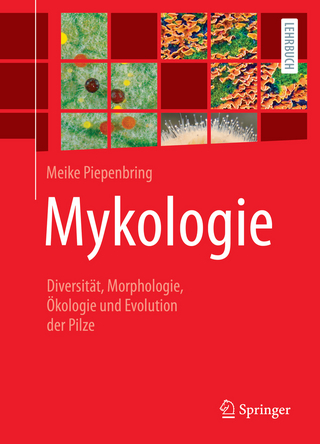
Evolution and Speciation in Fungi and Eukaryotic Biodiversity
CRC Press (Verlag)
978-1-032-42143-8 (ISBN)
- Lieferbar (Termin unbekannt)
- Versandkostenfrei innerhalb Deutschlands
- Auch auf Rechnung
- Verfügbarkeit in der Filiale vor Ort prüfen
- Artikel merken
Recipient of the S.S. Bhatnagar Prize, the highest Indian award for scientists, one of the 10 National Professorships, T.J. Pandian has served as editor/member of editorial boards of many international journals. His books on Animal Energetics (Academic Press) identify him as a prolific but precise writer. His five volumes on Sexuality, Sex Determination and Differentiation in Fish, published by CRC Press, are ranked with five stars. He has authored a multi-volume series on Reproduction and Development of Aquatic Invertebrates, of which the volumes on Crustacea, Mollusca, Echinodermata and Prochordata, Annelida, Platyhelminthes and Minor Phyla have been published. The CRC Press has recently published his new book series on Evolution and Speciation in Animals, Evolution and Speciation in Plants and Evolution and Speciation in Protozoa. The fourth volume on Evolution and Speciation in Fungi and Eukaryotic Biodiversity is in your hands.
General Introduction. Spatial Distribution. Fungi: Modes of Life. Acquisition of Micronutrients. Mycology: Teaching – Degrees. Clonal Multiplication. Sex – Mating Type – Sexuality. Gametangia – Gametogenesis. Sporogenesis – Quantity – Dispersal. Sex Determination – Pheromones. Lichens. Past: Fungal Evolution. Present: Desiccation and Dormancy. Future: Climate Change. Eukaryotes: Species Diversity.
| Erscheinungsdatum | 13.11.2024 |
|---|---|
| Zusatzinfo | 65 Tables, black and white; 1 Illustrations, color; 94 Illustrations, black and white |
| Verlagsort | London |
| Sprache | englisch |
| Maße | 156 x 234 mm |
| Themenwelt | Naturwissenschaften ► Biologie ► Botanik |
| Naturwissenschaften ► Biologie ► Ökologie / Naturschutz | |
| Technik | |
| ISBN-10 | 1-032-42143-6 / 1032421436 |
| ISBN-13 | 978-1-032-42143-8 / 9781032421438 |
| Zustand | Neuware |
| Informationen gemäß Produktsicherheitsverordnung (GPSR) | |
| Haben Sie eine Frage zum Produkt? |
aus dem Bereich


